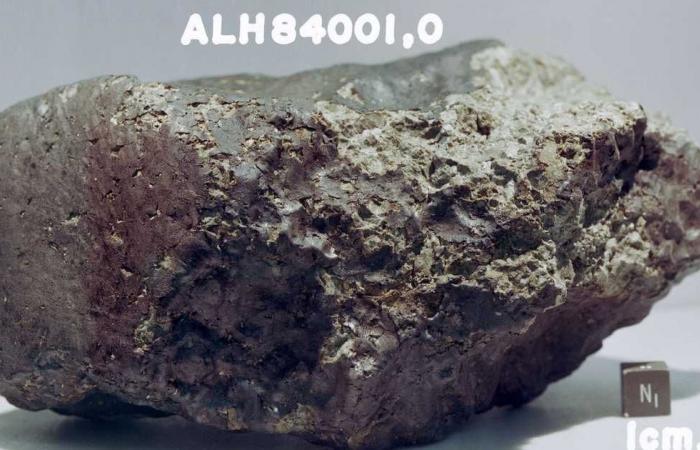In 1996, a team led by NASA The organic compounds in the rock look as if they had been left by living organisms. Other scientists have been skeptical and researchers have dismissed this hypothesis for decades, most recently a team led by Andrew Steele of the Carnegie Institution for Science.
Steele said small samples of the meteorite show that the carbon-rich compounds are actually the result of water — salty or likely salty water — that flowed over the rock for a long time.
during wet period Mars In the early past, at least two impacts occurred near rocks, warming the planet’s surrounding surface, before a third impact bounced off the Red Planet into space millions of years ago. The 4 pound (2 kilogram) rock was found in Antarctica in 1984.
According to the researchers, the groundwater moving through cracks in the rock, while it was still on Mars, formed tiny balls of carbon existing. They said the same could happen on Earth and could help explain the presence of methane in Mars’ atmosphere.
But two of the scientists who took part in the original study disputed these latest findings, calling them “disappointing”.
These were the details of the news Study: 4-billion-year-old meteorite confirms that there is no life on Mars for this day. We hope that we have succeeded by giving you the full details and information. To follow all our news, you can subscribe to the alerts system or to one of our different systems to provide you with all that is new.
It is also worth noting that the original news has been published and is available at saudi24news and the editorial team at AlKhaleej Today has confirmed it and it has been modified, and it may have been completely transferred or quoted from it and you can read and follow this news from its main source.

